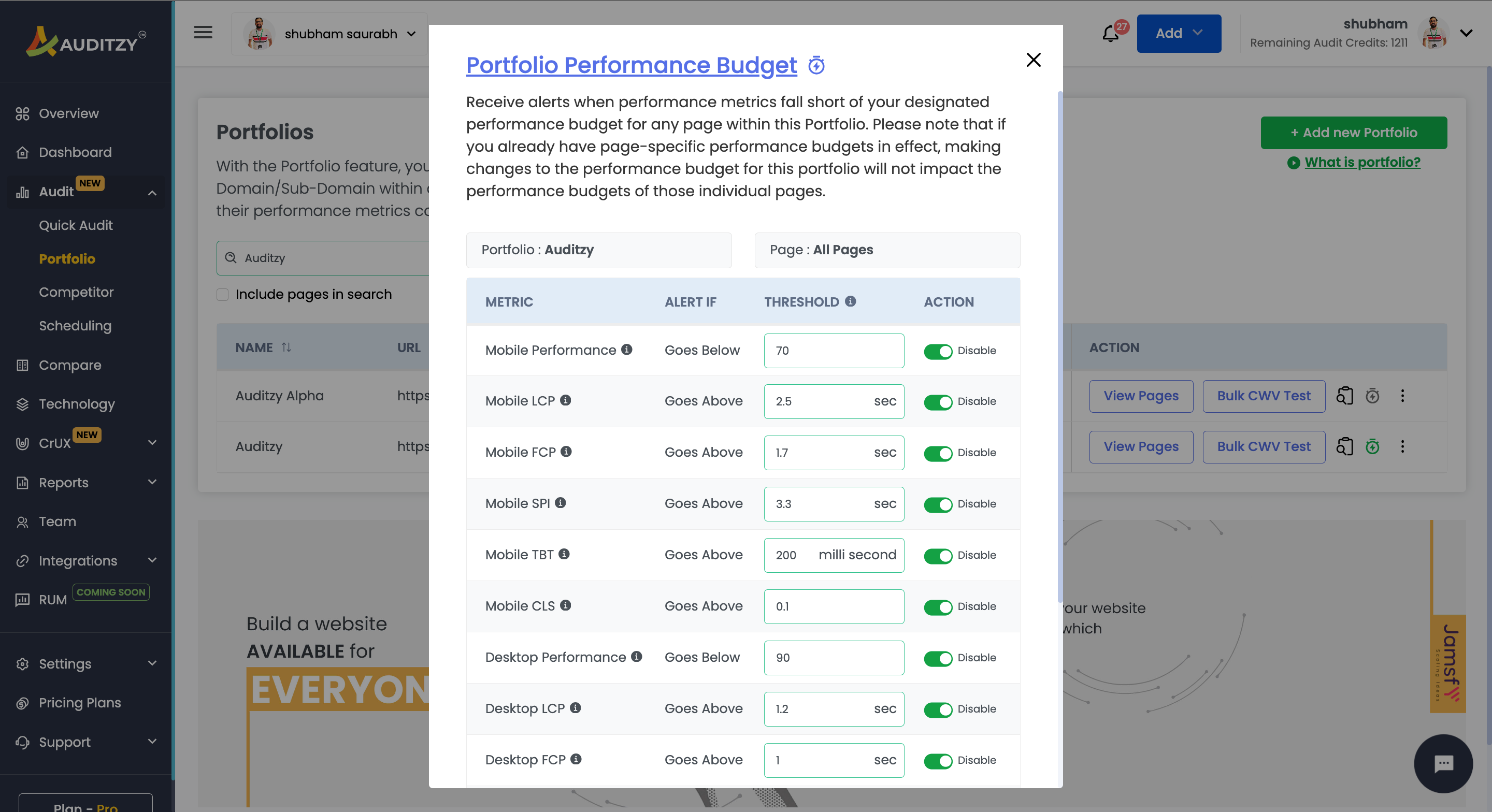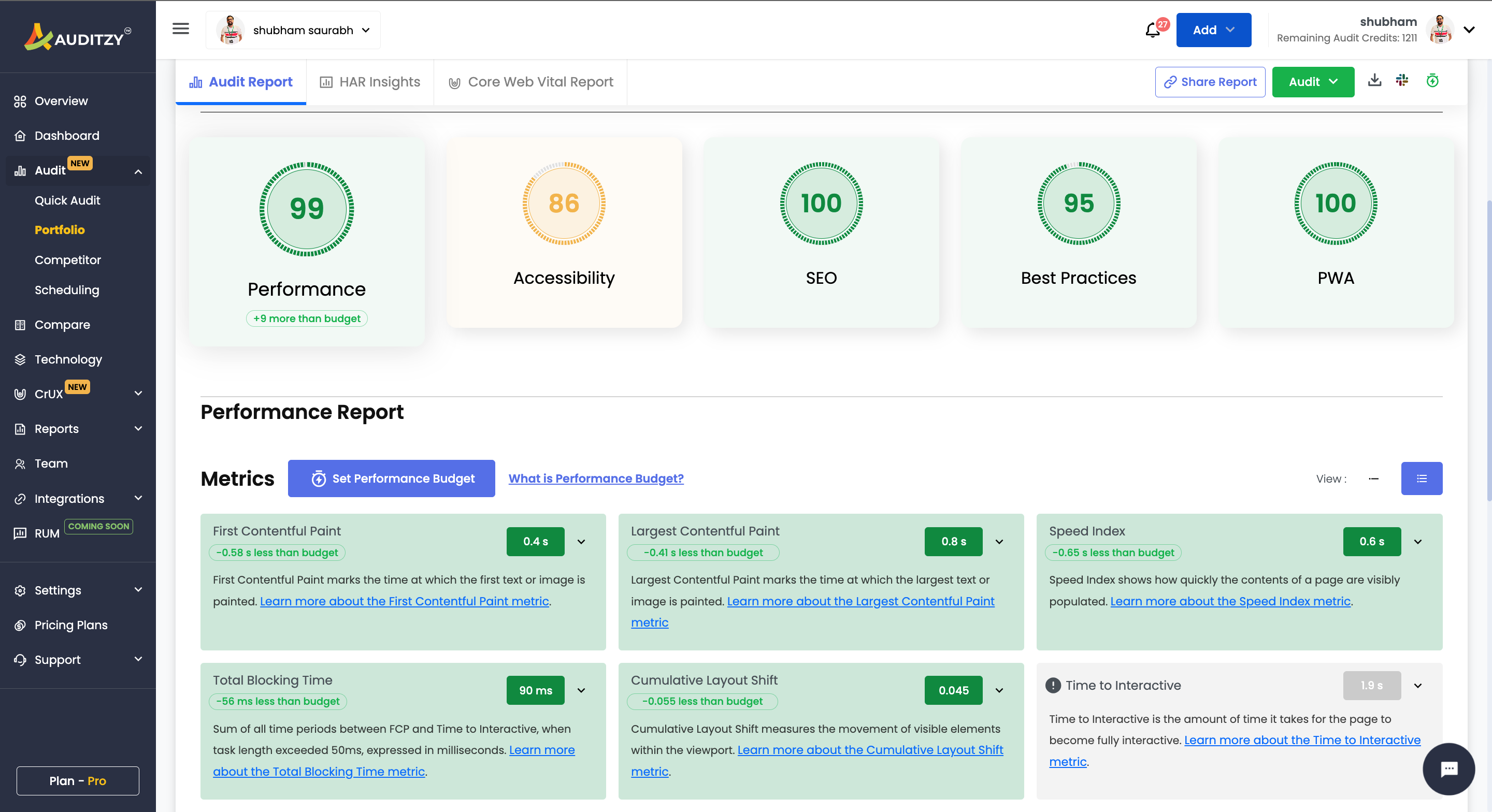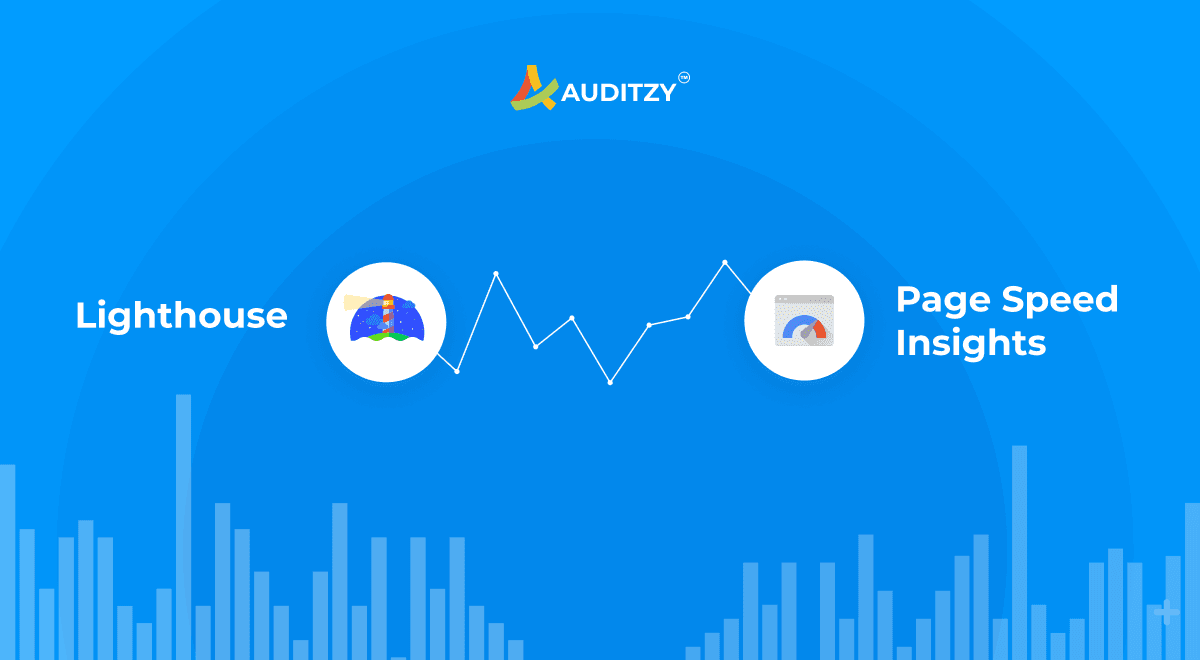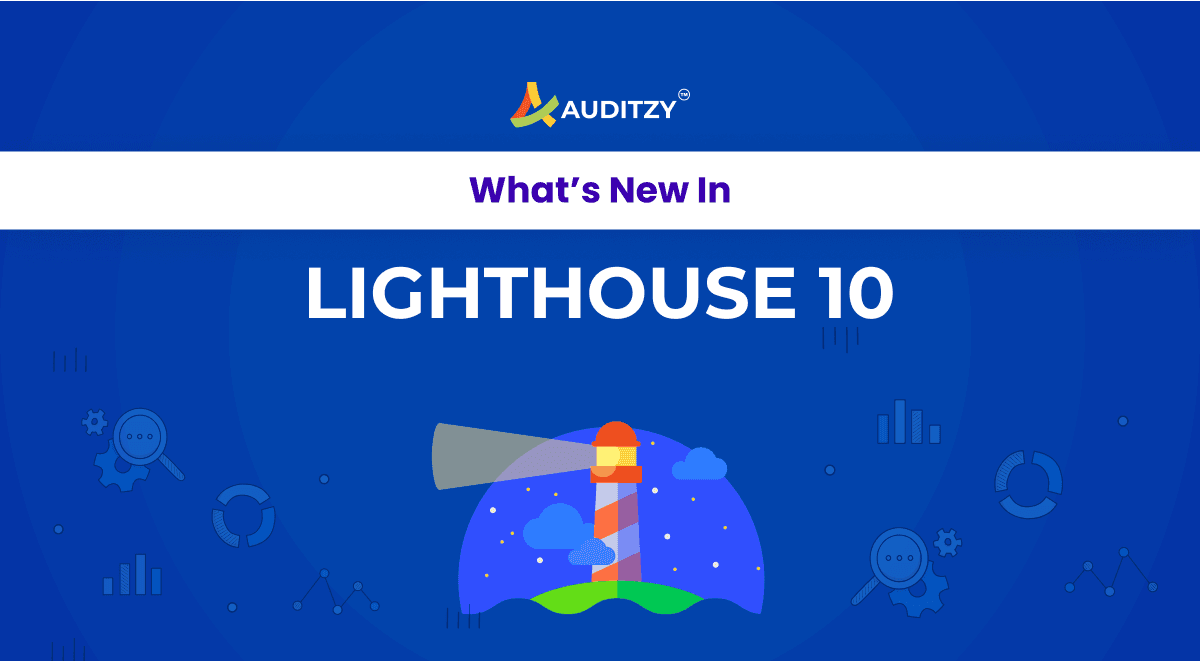Lighthouse
Web Performance Budget Strategy to Improve Website Performance
Overview
In the ever-evolving landscape of online presence, the need for a swift and seamless user experience has never been more critical. Web performance can make or break a website's success, influencing user satisfaction, search engine rankings, and overall business outcomes. Enter the world of Web Performance Budgets – a strategic approach to optimizing website performance for unparalleled success.
This article will maintain a business-oriented focus, given our prior coverage of technology through our product Auditzy. This approach allows you to concentrate on the crucial aspects of the Website Performance Budget.
What is Web Performance Budget?
A Web Performance Budget is a predetermined set of constraints and goals related to a website's performance metrics. It serves as a roadmap for website owners and developers, ensuring that the site not only meets but exceeds industry benchmarks for speed, responsiveness, and overall user experience.
Consider constructing a house from scratch and subsequently establishing benchmarks for both the construction process and the post-development phase. When building a home, you establish a budget that encompasses both quality and quantity. Quality factors include the type of cement, concrete, iron rods, paints, bricks, etc. Quantity considerations involve determining the amount of bricks, concrete, and cement needed for the construction of the house.
The same principles apply to website development, where attention is given to both quality and quantity. Metrics like FCP, LCP, CLS, INP, FID, TTFB, and TBT focus on quality, while the associated values pertain to quantity, mirroring the considerations in house construction.
Each house is unique, shaped by the owner's budget, influencing the quality and quantity of materials employed. The proficiency of House Builder Contractors is crucial; without the requisite qualifications, constructing a home within the owner's budget becomes challenging. This scenario is mirrored in website development and the concept of a Website Performance Budget. In this context, you are the website owner, and your agency or tech team serves as the contractor.
When to Use Web Performance Budget?
Implementing a Web Performance Budget is crucial at various stages of a website's lifecycle. Whether you're launching a new site, undergoing a redesign, or looking to enhance an existing website, integrating a performance budget ensures that speed and efficiency are at the forefront of your digital strategy.
Returning to our earlier example of house building, imagine you're contemplating additional work in your current home. In such a scenario, you would ensure that the new work aligns with or surpasses the existing standards of your house. Setting clear expectations for your house building contractor becomes imperative in this context.
The same principles also apply to website development. Imagine you're running an online store, and every week you are launching new products, requiring a new webpage for each. Depending on your previous benchmark for the performance budget, you will ask your tech team/agency to maintain the same performance budget or even improve upon it.
Website Performance Budget should be implemented across the SDLC/PDLC because it ensure for quality and provides an optimal User Experience.
Why Use Web Performance Budget?
The benefits of employing a Web Performance Budget are manifold. From boosting user engagement and satisfaction to improving search engine rankings, a performance-focused strategy sets the stage for online success. It's not just about meeting standards; it's about exceeding expectations and delivering a superior web experience.
Business Benefits of Web Performance Budget
- Enhanced User Experience: A faster website translates to happier users. With a performance budget in place, load times are optimized, keeping visitors engaged and satisfied.
- Improved SEO Rankings: Search engines prioritize fast-loading websites. By adhering to a performance budget, you're signaling to search algorithms that your site is user-friendly and deserves a higher rank.
- Increased Conversions: Speed matters when it comes to conversions. An efficient website encourages users to stay longer, explore more, and ultimately convert into customers.
- Cost Savings: Optimizing your website's performance can lead to reduced hosting costs and lower bounce rates, resulting in long-term savings for your business.
Performance Budget facilitates better decision-making in the development process. It prompts a thoughtful consideration of the trade-offs between design aesthetics and website speed, encouraging a balance that aligns with your business goals. This approach ensures that your website not only looks impressive but also performs optimally.
How to Decide Performance Budget Metrics Value?
This is the most challenging part, why? It's because the same website behaves differently in terms of loading for different set of users. This what we call Visitor First Persona (VFP). For example, let's assume you have an online e-commerce store which attracts traffic from multiple countries. Now website visitor can have different networks, devices with them and same website can load differently depending upon the combination of Device + Network Speed + Distance of the visitor from the website hosting server location.
To overcome this situation we have developed Auditzy, which allows to create 5000+ Website Visitor Test Profiles across 40+ Devices, 10+ Networks and 13+ Global Test Locations.
With Auditzy, you can perform 2 types of Performance Budget,
- Portfolio Based Performance Budget: It will be applied to all the URLs of a Domain
- Page Based Performance Budget: It will be applied to a Specific URL of a Domain

Auditzy allows you to set a predefined budget for Lab Data and notifies you promptly if any page on a particular website falls short of the established performance budget metrics during testing or monitoring. An illustrative report is provided below. The reports indicate a a good score of +9 beyond the budget for the overall Lab Performance Budget. This is because the budget for this portfolio being set at 90 for performance. Likewise, other metrics have their respective values; for example, FCP indicates a positive aspect by being -0.58 seconds less than the set budget, which is considered favourable.

Auditzy Offers a very enriched website performance monitoring suite to monitor and optimise website performance, speed and visual stability across 5000+ website visitor personas. Get Started with Auditzy today for real-time website speed and performance monitoring.
How to do Performance Budget Research?
By now, you should grasp the significance of implementing a website performance budget—recognising its business advantages and its pivotal role in Software Development and Continuous Learning (SDCL). The next critical step is ensuring that you have accurately set the right expectations for your development teams. How can you guarantee that your performance goals align seamlessly with the objectives of your development endeavours? Let's delve into this essential aspect.
Here are the steps that will enable you to establish appropriate expectations:
- Identify Device Type: Understand your website user personas; this can be accomplished through Google Analytics and similar tools. Look for user modes, whether they are accessing your site from a desktop or mobile device. Following this, identify the device screen sizes for both desktop and mobile visitors.Create five test profiles based on device screen sizes for both desktop and mobile platforms. Then, locate the corresponding screen sizes for devices in Auditzy and initiate the website speed test.
- Identify User Locations: Additionally, it's crucial to comprehend the locations of your website visitors. Revisit Google Analytics and identify the top five user traffic locations. Establish a test profile on these locations. Choose the nearest location on the Auditzy Dashboard and commence the Website Speed Test.
- Identify Website Visitors Network Speed: It's very important to understand the website visitors network speed as well. Visitors may visit website from different networks like 4G, 5G etc. Identify the same and create 5 Test Profiles, and Choose the Network from Auditzy Network Offerings and Start Website Speed Test
- Understand your Competition: Examine the Lab and Field Data of your competitors' websites to gain insights into their website performance budget strategies. Aim to either align with or surpass these strategies. Keep in mind that your competitor's business nature and user personas may differ, emphasizing the need for careful expectation setting after thorough examination. Always conduct an apples-to-apples comparison to ensure a fair assessment.
- Identify the Technology of the Competition: Often, the speed and performance of a website hinge on the technology chosen. For instance, Next.js, by default, outperforms platforms like WordPress and PHP. To gauge your website's competitive edge, use the Auditzy Technology Checker. It helps you assess whether the current technology is conducive to achieving optimal website performance.
Once you've pinpointed 5 device types, 5 locations, and 5 network speeds, you have a total of 5 X 5 X 5 = 125 test profile combinations for conducting your website speed tests. Get started with Auditzy today.
I have finalised my Web Performance Budget, what comes next?
After finalising your Web Performance Budget, the next step is to initiate a Website Speed Test and closely monitor the results for various Test Profiles.We recommend regularly checking the performance of your critical URLs on your selected Test Profiles on a daily basis to detect any fluctuations in performance.
Conclusion
In the competitive online landscape, a Web Performance Budget is not just a strategy; it's a necessity. By embracing this approach and utilising tools like Auditzy, you can elevate your website's performance, delight your users, and achieve sustainable business success.
Take the leap toward a faster, more efficient online presence – your audience and search engines will thank you.
Auditzy is a Website Speed Testing And Monitoring Automation Tool Designed for Performance Professionals like CXOs, PMs, SEO Experts, and Developers.



